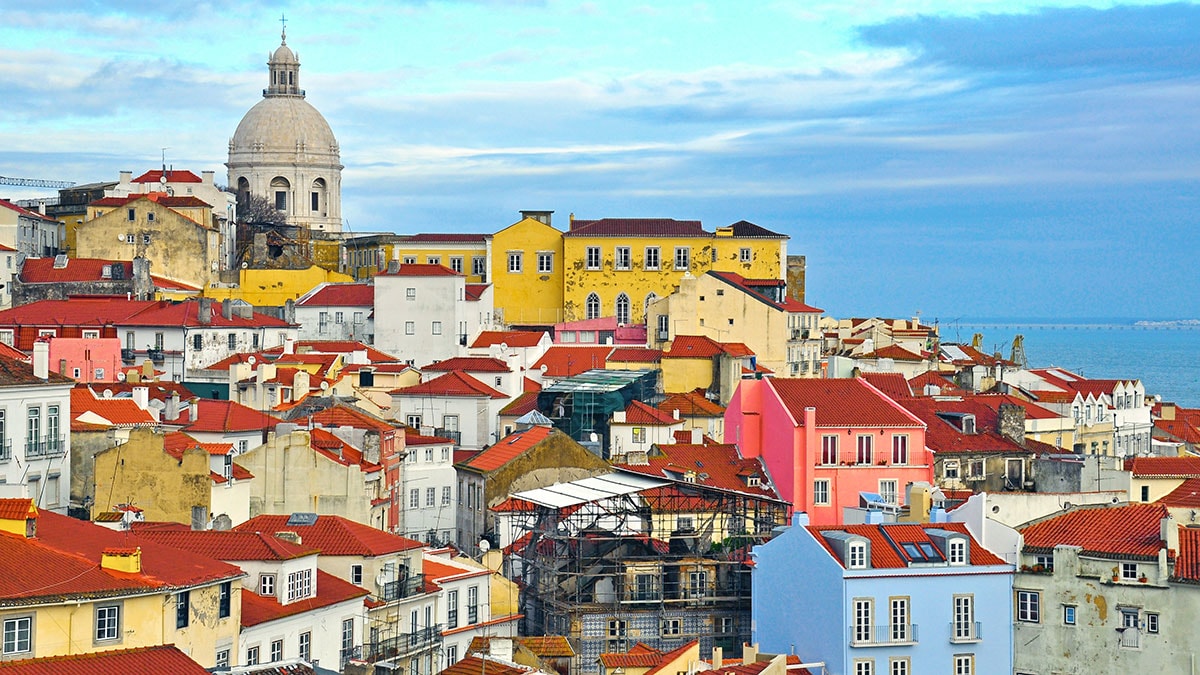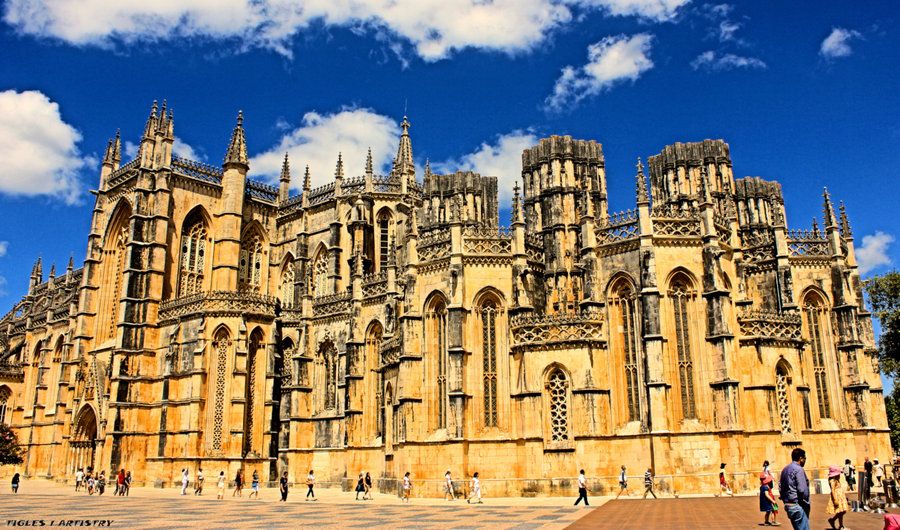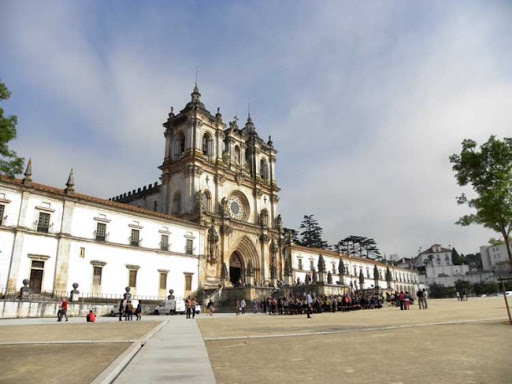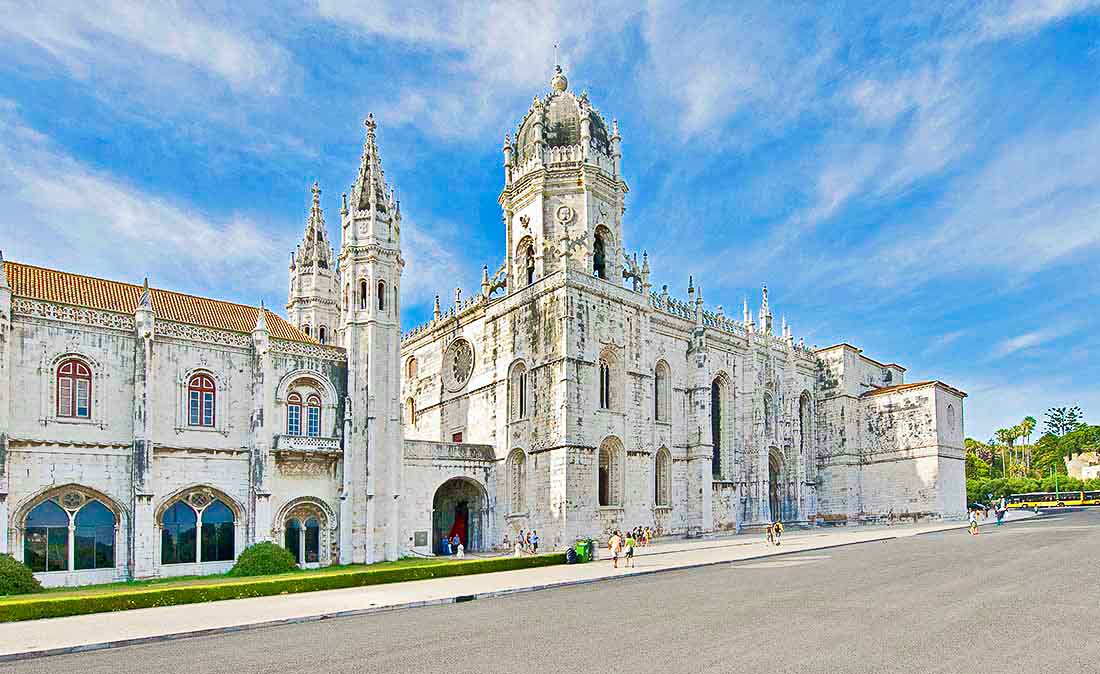
Seven Wonders of Portugal
For many travelers, Portugal is considered to be a distant and unexplored region burned by the sun and imbued with the smell of black coffee, orange and eucalyptus. The true spirit of the Portuguese can be traced in their traditional sad songs and national monuments, which to this day can be received by crowds of tourists. Recognized architectural monuments of the country are included in the magnificent Portuguese seven: Guimaraes Castle, the ancient fortress town of Obidos, Batalha Monastery, Alcobaca Abbey, Belen Tower, Jeronimos Monastery and the royal Pena Palace.
Guimaraes Castle
Guimaraes - the oldest of the capitals of Portugal - is located 312 km from Lisbon. Guimaraes is called the cradle of the Portuguese nation: it was here that Prince Afonso Henriques was born in one of the castle’s towers, who defeated his mother’s mother, Teresa Leon, in 1128, thus freeing the Portuguese county from the feudal influence of the Kingdom of Leon. In 1139, Afonso won a tremendous victory over the Moors in the battle of Ourik, after which he proclaimed himself king. From that moment, Portugal ceased to be a feudal inheritance and received the status of an independent kingdom. On one of the walls of the castle you can see an inscription made of white gypsum, made in a pseudo-gothic font: “Portugal was born here.” The image of Guimaraes is immortalized on the emblem of the country.
City Museum Obidos
Over 800 years of its history, Obidos has preserved the look of a fortress city It is surrounded by impregnable bastions and battlements, in the niches of which there are arched passages decorated with medieval bas-reliefs. Obidos was the favorite residence of monarchs, a venue for celebrations and weddings. In the Middle Ages, the Bay of Gulf approached the gates of Obidos, but it became shallow, and cherry orchards bloomed at the harbor site. It was these gardens, as well as the confectionery factories, that Obidos brought glory to the liqueur-chocolate capital of Portugal. From ripe cherries produce thick, rich in color and aroma liqueur - liqueur liqueur. And in November, on the days of the International Chocolate Festival, the old streets of Obidos turn into huge windows filled with cakes, sweets and other sweets. In July a medieval festival with knights, music and theatrical performances takes place near the castle walls. Since 1950, the historical hotel has been located in the Obidos castle.

Monastery of Batalha
The monastery in the city of Batalha is a vivid example of Gothic with elements of the Portuguese style "Manueline." The facades of the chapels are decorated with lush openwork carving of stone, and the stained-glass windows of the windows shimmer with blue, mauve and yellow shades. The monastery was founded in 1385 by order of King João I as a sign of gratitude to the Virgin Mary for the victory over the Spaniards. The Founder's Chapel, which serves as the tomb of João I and his wife, adjoins the monastery's late-Gothic church from the south, and the magnificent covered gallery and the Capitul Hall, a rectangular room with Gothic vaults, from the north. The last built "Imperfeyta" ("Unfinished Chapel", 1434). It is made in the form of an octahedral rotunda decorated with stone “laces”.

Monastery of Alcobaça
In 1153, King Afonso Henriques built a colossal Cistercian abbey capable of sheltering a thousand monks. The cathedral of the monastery of Alcobaça became the first Gothic building of Portugal and the spiritual center of the country. 200 years old monastery served as a royal tomb. In the transverse nave of the basilica are located the sarcophagi of Pedro I and his mistress, Inés de Castro, whose love story acquired the status of a national myth in Portugal. Prince Pedro I had four children from his mistress, and when his legal wife died, he flatly refused to marry another. Then the father of Prince Afonso ordered his advisers to kill Inez. In retaliation, Pedro declared war to his father, and executed the murderers in the most painful way. Inconsolable in his grief, Pedro commanded Ines to take the body out of the grave, clothe it in royal clothes and give the royal mistress royal honors, kissing her withered hand. Then she was buried in the royal tomb. The tombs of Pedro and Ines are facing one another, so that the meeting takes place immediately after the resurrection, when people “wake up” for eternal life on the Day of Judgment.

Jeronimos Monastery
The pride of Lisbon - the monastery of Jeronimos - is built in all the splendor of the Manueline style, famous for its passion for fancy decor. The monastery is inextricably linked with the history of the Great Geographical Discoveries: in the Middle Ages there was a chapel, where Vasco da Gama and his companions prayed before sailing. And on the square in front of the chapel was the harbor, from which the ships of Vasco da Gama went on a long voyage towards India. The monastery was built in the XVI century with money received from the resale of Indian spices. In addition to Vasco da Gama, Portuguese kings and poets are buried in the tombs of Jeronimos.

Belem Tower
Not far from the monastery of Jeronimos is Belen Tower. It received its name because of its location in the old district of the same name in Lisbon. “Belem” in Portuguese pronunciation means “Bethlehem” - the holy city for Christians where I. Christ was born. The name given to the suburb by devout Portuguese turned out to be symbolic: it was here at the turn of the 15th and 16th centuries that the sea glory of Portugal was born. Belem Tower was built in 1515-1521 in honor of the discovery of the sea route to India by Vasco da Gama. This elegant, "lace" building alternately served as a guard fortress, a lighthouse and a prison. The Belém Tower is one of the finest examples of Manueline style typical of Portugal in the Renaissance, but almost lost in our days. On the upper terrace of the tower, at an altitude of 35 meters, an observation deck is equipped, from where a wonderful view opens.

Pena Palace
On the rocky cliff above the city of Sintra there is a pseudo-medieval Pena palace, reminiscent of the fairytale castle from Disneyland with its eclectic and cheerful turrets of different colors. The castle and the adjacent park of 270 hectares was founded in 1840 as the summer residence of the kings. In the architecture of the palace intertwined features of almost all known by that time styles - from Gothic to Classicism. Palace interiors are preserved in the form in which they were left by the last Queen of Portugal, Amelia, who was expelled from the country during the bourgeois revolution of 1910.


















